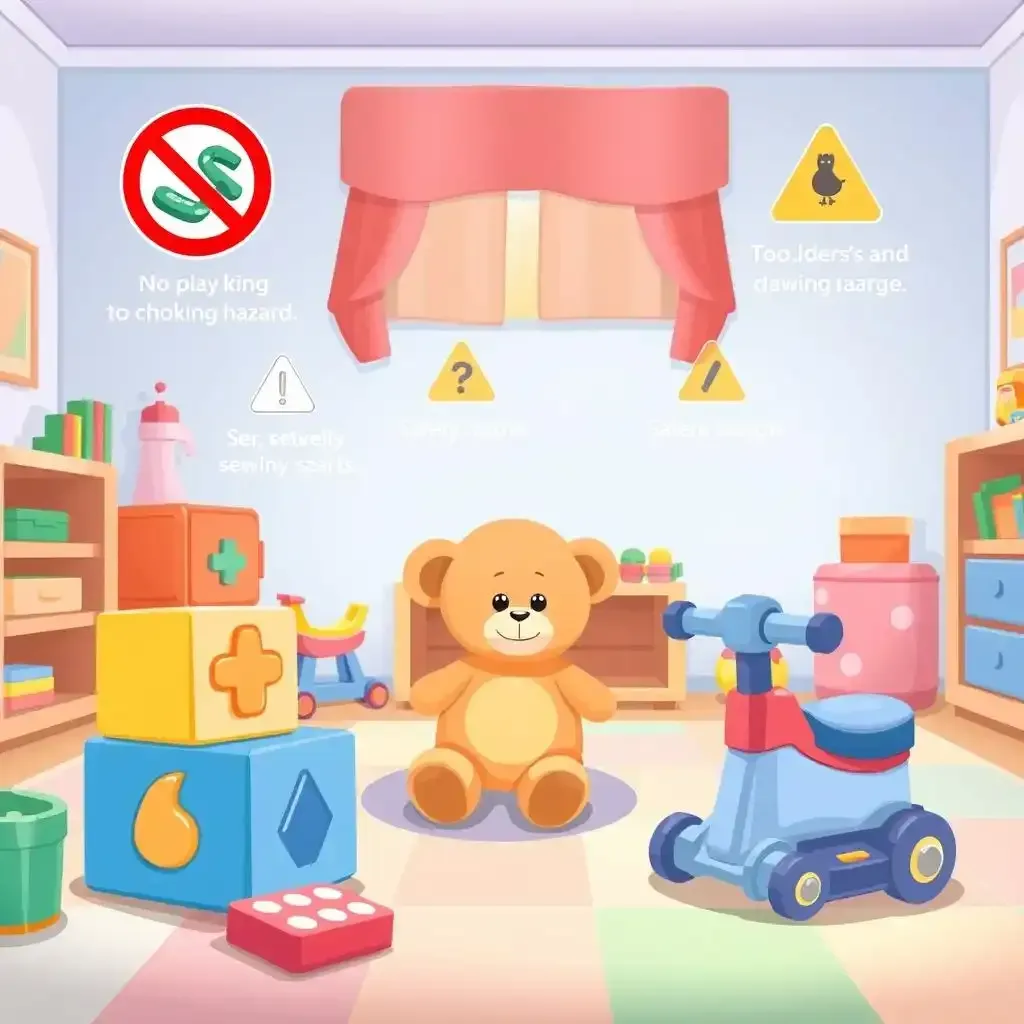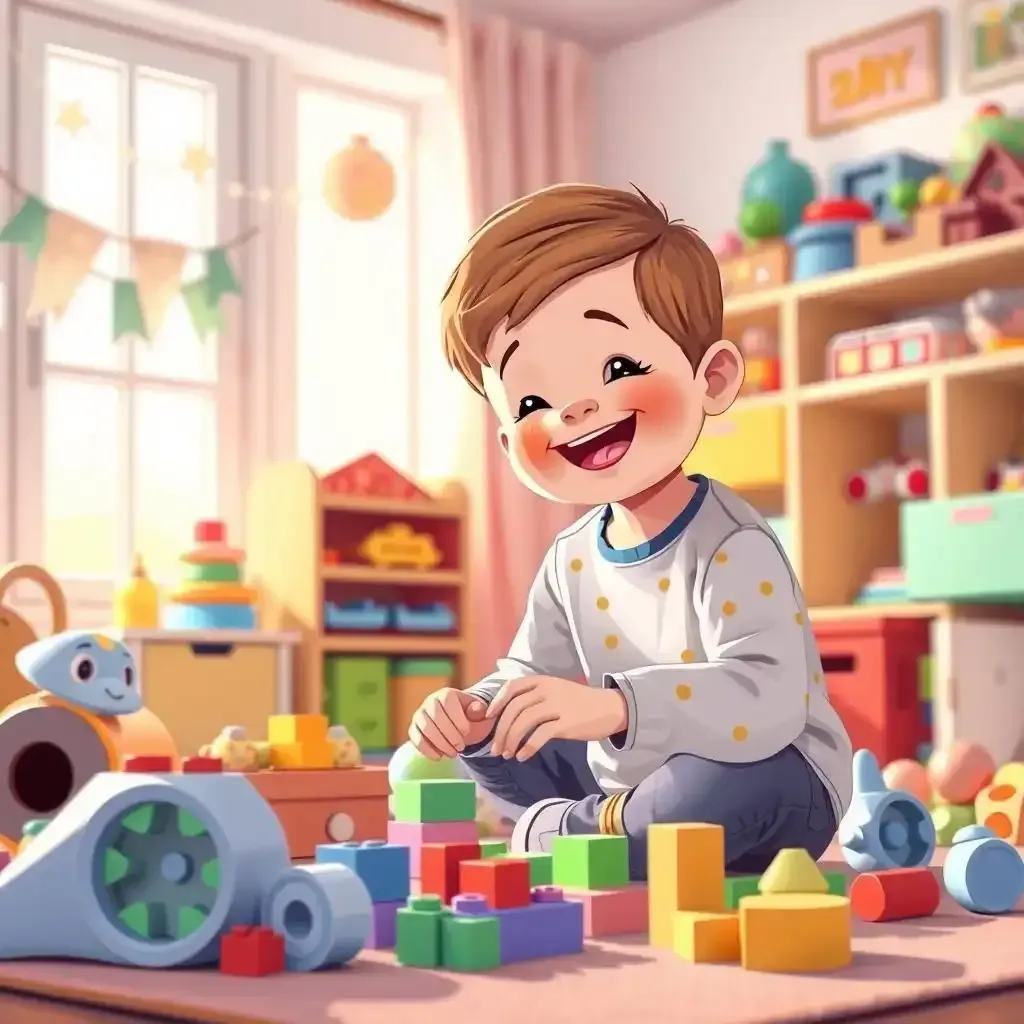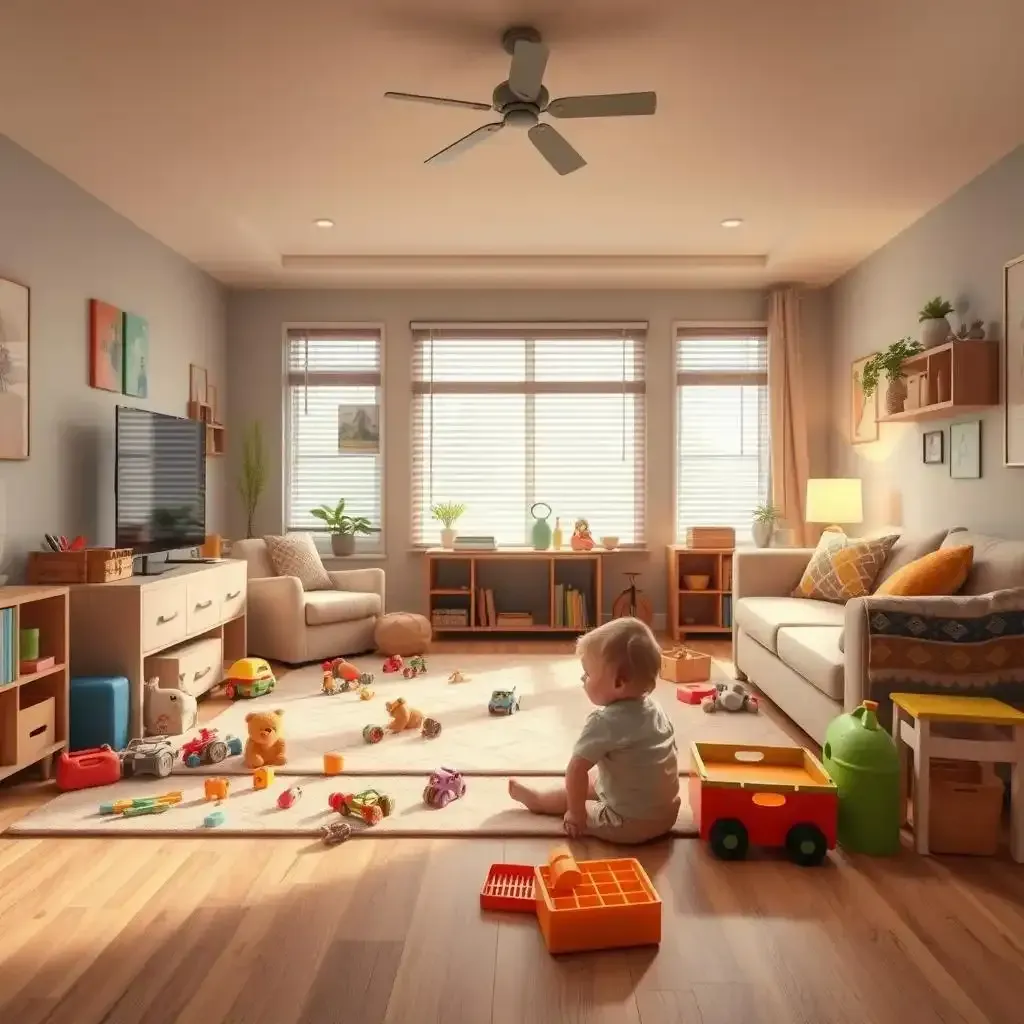Table of Contents
Choosing the perfect toy for your little one is exciting, but ensuring their safety should be your top priority. At kittentoyland.org, we understand that selecting safe toys can feel overwhelming. This guide provides crucial toy safety tips, covering everything from age-appropriate choices to identifying potential dangers lurking in seemingly harmless playthings. We'll explore practical strategies to create a safer play environment for children of all ages, addressing choking hazards, sharp edges, and other common risks. We'll also look beyond the toys themselves, discussing ways to make your home a safer space for playtime. From toddlers to older kids, these toy safety tips will help you guide the world of toys with confidence and peace of mind. Remember, a little knowledge goes a long way in keeping your child safe and happy while they play. Let's investigate into the world of safe and fun playtime!
Toy Safety Tips for Toddlers: Avoiding Choking Hazards and Other Dangers

Toy Safety Tips For Toddlers Avoiding Choking Hazards And Other Dangers
Choking Hazards: The Tiny Terror
Okay, let's talk about the biggest worry with toddlers and toys: choking! It's scarier than a monster under the bed, trust me. Tiny toys, small parts that break off, anything that can fit inside a toilet paper roll – these are all potential choking hazards. Think of it like this: if it's smaller than a ping-pong ball, it's probably too small for a toddler. I once saw a kid try to swallow a Lego – not a good look! Always check the toy packaging for age recommendations, and if you’re buying secondhand, be extra careful. Remember, prevention is key! For more on finding safe toys, check out our guide to local toy safety.
Sharp Edges and Points: Ouch!
Next up: sharp edges and pointy bits. These aren't just annoying; they're dangerous! Think about those ridiculously pointy plastic swords or toys with jagged edges. These can cause nasty cuts and scrapes, turning playtime into playtime-ouch-time. Always feel the toy yourself before giving it to a toddler. Run your fingers over the edges; would *you* want to get poked by that? If not, your toddler probably wouldn't either. We've got some great reviews of toys that are safe and fun on our website, including the local toy reviews page.
Beyond the Toy Itself: Safe Play Spaces
It’s not just about the toys themselves; it's about where they play, too! Make sure the play area is safe and free of other hazards. Are there electrical cords they could pull on? Are there things they could trip over? Toddlers are like little human tornadoes; they can create chaos in seconds. So, clear the area, remove anything dangerous, and create a dedicated, safe play zone. Think of it as building a toddler-proof fortress of fun. Need help finding the perfect toys for your little one's play space? Look no further than our selection of best local toys!
- Check toys regularly for damage.
- Supervise toddlers while they play.
- Keep small toys out of reach.
Toy Type | Potential Hazard | Safety Tip |
|---|---|---|
Building Blocks | Choking hazard (small pieces) | Choose blocks designed for toddlers, with larger pieces. |
Stuffed Animals | Small parts, loose eyes | Check for loose parts and securely sew them. |
Ride-on Toys | Falls, tipping | Supervise use and choose stable toys. |
Toy Safety Tips for Older Kids: Navigating Age-Appropriate Play and Potential Risks

Toy Safety Tips For Older Kids Navigating Age Appropriate Play And Potential Risks
Beyond Choking Hazards: New Dangers for Bigger Kids
Okay, so your little one's past the "everything-in-the-mouth" stage. That's great! But that doesn't mean the toy safety progression is over. Older kids face different risks. Think about those tiny parts that could still be a choking hazard for younger siblings. Or maybe the toy itself is a bit too complex for their age. A friend of mine had a near miss with a super-complicated building set. Her eight-year-old nearly poked his eye out with a tiny piece while trying to assemble a miniature spaceship. Always check the age recommendations carefully and consider the child's maturity level. What's appropriate for a ten-year-old might be way too challenging for a six-year-old. To help you find the perfect age-appropriate toys, check out our guide to local toy guidance!
- Check for age appropriateness.
- Supervise kids' use of toys.
- Ensure toys are in good condition.
Sharp Objects, Batteries, and Other Hidden Threats
Older kids' toys can have other sneaky dangers. Sharp edges and points are still a risk, as are small batteries that can be swallowed (and those are seriously dangerous!). Then there are things like long cords or strings that could cause strangulation. I've seen some really cool toys that are completely safe but have small parts that could easily break off, posing a choking hazard. Always inspect toys carefully before letting your child play with them. Feel the edges, check for loose parts, and make sure the toy is sturdy enough to withstand some rough and tumble play. For more detailed reviews of toys, check out our to make informed choices!
Toy Type | Potential Hazard | Safety Tip |
|---|---|---|
Sports Equipment | Injuries (concussions, broken bones) | Use proper safety gear (helmets, pads). |
Arts & Crafts Supplies | Cuts, burns, allergies | Supervise use and ensure appropriate materials. |
Electronics | Burns, electric shock | Choose toys with safety certifications. |
Beyond the Toy Box: Comprehensive Toy Safety Tips for a Safer Home

Beyond The Toy Box Comprehensive Toy Safety Tips For A Safer Home
Making Your Home a Toy Safety Fortress
Okay, so we've talked about toys themselves, but let's be real – the battle for toy safety isn't just fought *in* the toy box, it's fought *around* it! Your home is your kid's playground, and that means it needs to be a safe one. Think of it like this: your house is a giant, exciting obstacle course, and you, my friend, are the course designer. You wouldn't want your kid to trip over a rogue capability cord, would you? That's why we need to create a safe haven for playtime, free from lurking dangers. Check out our guide on for more tips!
- Keep small objects out of reach.
- Secure loose cords and wires.
- Make sure furniture is stable.
The Sneaky Dangers Hiding in Plain Sight
You might think you've done a great job, but even the most vigilant parent can miss some sneaky hazards. I remember when my niece was little, she managed to find and open a drawer full of cleaning supplies – not a good combination with a curious toddler! You'd be surprised what a little one can get into. So, keep cleaning products, medications, and other potentially harmful items locked away securely, out of reach. Think like a tiny, determined ninja – where would *they* try to sneak? This is where you need to be one step ahead. For more insights into creating a safe play environment, check out our tips on .
Location | Potential Hazard | Safety Solution |
|---|---|---|
Kitchen | Sharp knives, hot stove | Keep cabinets closed, supervise cooking. |
Bathroom | Cleaning supplies, medicine | Use childproof locks, store items up high. |
Living Room | Electrical cords, furniture | Use cord covers, secure furniture to walls. |
Beyond the Obvious: Unexpected Toy Safety Threats
It's not just about the big, obvious things. Sometimes, the smallest details matter most. Take window blinds, for example. Those cords can be a strangulation hazard. So, make sure those cords are tied up securely, or use cordless blinds if possible. Another thing to watch out for? Loose furniture, like bookshelves. A little one could pull on a shelf and bring the whole thing crashing down. Secure heavy furniture to the wall to prevent tipping. Remember, toy safety isn't just about the toys themselves. It's about making your entire home a safe place to play. Check out our collection of for ideas on fun, safe playthings.
“The best way to keep your child safe is to be proactive and think like a child.” - Dr. Emily Carter, Pediatrician
Final Thought
Creating a safe and enjoyable play environment for your child is a continuous process. By staying informed about toy safety tips and regularly assessing your home for potential hazards, you can significantly reduce the risk of accidents. Remember, the goal is not to eliminate all risk—that's impossible—but to minimize it and create a space where children can explore, learn, and grow while feeling secure and protected. Happy playing!